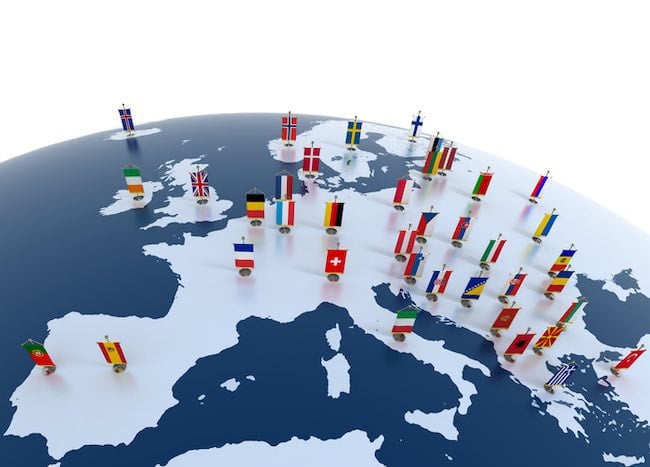Top Tips For Managing Large-Scale Multilingual Translation Projects

In today’s global marketplace, businesses must communicate across borders and cultures to succeed.
Whether it's a multinational product launch, a global marketing campaign, or international compliance documentation, large-scale multilingual translation projects have become a cornerstone of global business operations.
At LinguaLinx, we recognize that translation projects that involve two languages can appear challenging. So, the thought of rolling out multiple languages at once can be a daunting prospect for even the most experienced project manager.
As a Language Service Provider (LSP), we’re used to helping our clients through the process of taking on such projects which come with significant logistical, linguistic, and cultural challenges.
Here's our top tips to help you successfully navigate the complexities of large-scale multilingual translation projects.
Start with a Solid Plan
A clear project plan is essential before diving into translation. Identify your project’s scope, goals, target languages, and end users.
Ask yourself:
- What content needs translating?
- Which markets and languages are involved?
- What is the desired tone and style?
- Are there any legal or cultural sensitivities?
Creating a comprehensive brief ensures all your stakeholders—from translators to reviewers—are on the same page from the outset.
Build a Centralized Translation Management System (TMS)
A centralized TMS streamlines workflows, manages assets, and maintains consistency across languages and regions.
It allows you to:
- Track progress across multiple languages
- Store and reuse translated content via translation memories (TMs)
- Manage terminology glossaries
- Coordinate with linguists, reviewers, and vendors in real time
Your LSP can look at your project scope and help you decide on the best platform to significantly reduce manual coordination and errors.
Choose the Right Translation Approach
Not all content needs the same level of translation effort. Understand the difference between:
- Human Translation — Ideal for nuanced content like marketing or legal materials
- Machine Translation (MT) — Best for internal documents or high-volume data
- Post-Edited Machine Translation — Combines speed and quality
Segment your content based on its purpose and select the most efficient and cost-effective method for each.
Develop and Maintain a Terminology Glossary
A multilingual glossary ensures consistent use of brand-specific terms, technical vocabulary, and product names. This is particularly critical for industries like healthcare, law, or tech, where precision is key.
Involve local experts and linguists in creating the glossary early in the project and update it regularly to reflect evolving brand and product language.
Localize, Don’t Just Translate
Translation is about more than converting words—it’s about conveying meaning in a culturally relevant way.
When you localize content, you pay attention to the nuances of a translation and make them accurate to a specific culture within a location. Your localized content aligns with regional norms, humor, idioms, and legal requirements.
For example, promotional messages that work in the U.S. might need tweaking to resonate in Pakistan, Saudi Arabia, Indonesia or other countries with a large Islamic population.
This is why local, native-speaking linguists are invaluable as they bring both language fluency and cultural insight.
Create a Scalable Review Process
Quality Assurance (QA) is a challenge in multilingual projects, especially when numerous teams are involved. Implement a tiered review process that includes:
- In-language review by native speakers
- Brand/style checks for tone and terminology adherence
- Stakeholder sign-off for compliance and legal content
Use collaborative review tools that allow live commenting and version control to minimize delays and miscommunication.
Maintain Open Communication
Frequent, clear communication is crucial when working across time zones, languages, and cultures.
Set expectations for the following:
- Turnaround times
- Points of contact per language
- Update and feedback cycles
Tools like Slack, Microsoft Teams, and shared dashboards can help keep everyone in sync. Consider regular check-ins or status updates, especially during critical phases.
Plan for Continuous Updates
Large translation projects often extend beyond a single release. Whether you’re dealing with product updates, content revisions, or ongoing campaigns, build your workflows for continuous localization.
Use versioning, modular content structures, and automated syncs between your Content Management System (CMS) and TMS to keep translated content up to date without repeating the whole process from scratch.
Track Metrics and Optimize
Measure what matters. Track KPIs such as:
- Delivery timelines
- Cost per word/language
- Quality scores (e.g., error rates, customer feedback)
- Reuse rate from translation memory
Analyzing these metrics helps you identify bottlenecks, improve processes, and make objective decisions for future projects based on data.
Choose Experienced Partners
Finally, success depends heavily on your team. Find an LSP that has experience in your industry and will be a good fit with your brand and how you operate.
They’ll create a team of project managers, translators, editors, and any other necessary professionals who specialize in your industry and languages. They’ll vet any partners for QA processes, cultural expertise, and scalability.
A long-term relationship with an LSP leads to better communication, deeper brand understanding, and smoother project execution over time. They’ll become more than a supplier, they’ll be a proactive business partner offering advice and guidance as you move forward.
Don’t Let it Scare You
Managing a large-scale multilingual translation project is no small feat - it’s a blend of strategy, technology, collaboration, and cultural intelligence, but properly managed it can be a smooth and rewarding process.
By having the right plan, technology, team, communication and tracking process, you can deliver high-quality localized content that resonates with audiences around the world, on time and within budget.
Are you looking rolling out a multilingual translation project? If so, we’d love to talk to you. Consultations are free and there’s no obligation.
You’re in safe hands with us as we’re ISO 17100 and ISO 9001 compliant, have over twenty years of professional translation experience, and have earned the trust of organizations around the world.






